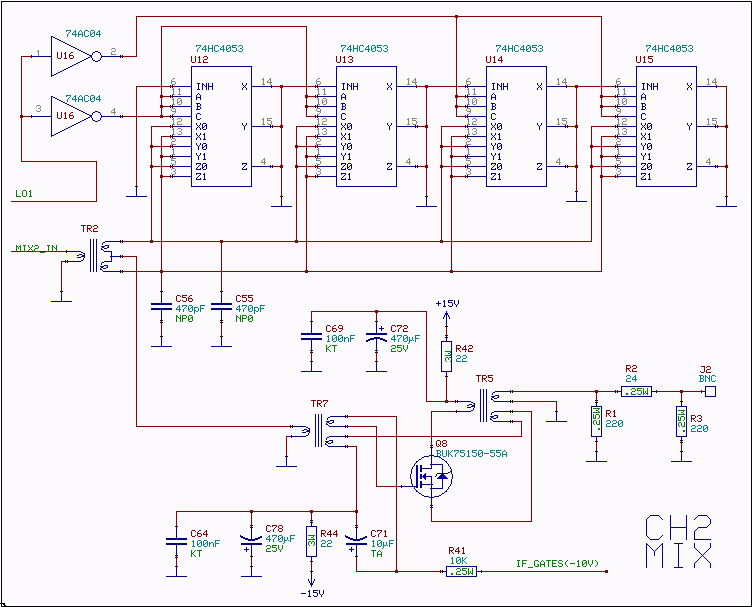|
The mixer is a simple switch controlled by the LO frequency.
To avoid spurs associated with overtones of the 10.7MHz RF signal
the voltage that is passed through the switch has to be below
about 2Vp-p.
In order to have sufficient signal energy to overcome the thermal
noise at the output of the mixer many switches are used in parallel.
Figure 1 shows the mixer and IF amplifier. The MOS-FET amplifier can amplify the 2V p-p signal by 10dB without degradation of the mixer IMD. 10dB is 4dB more than required so the amplifier is followed by a 4dB attenuator. If the MOS-FET feedback is changed to give 6dB gain the attenuator can be removed but that is risky. The amplifier can then deliver very high power to the 2.5MHz unit when it saturates and gets a low input impedance with failed input stage in the 2.5MHz unit as a consequence. The input transformer to the mixer, TR13, is wound on a ferrite core from Ferroxcube (Philips). Material 4C65, type TN 14/9/5. The primary winding is 10 turns and the secondary winding is a bifilar winding, 3 turns with two twisted wires. The wire dimension is not critical, but the windings have to be evenly distributed on the core. The gate transformer of the IF amplifier, TR9, is wound on a ferrite core from Ferroxcube (Philips). Material 4A11, type 16/9.6/6.3. The input winding is 4 turns, the gate and the source windings are both 9 turns wound bifilar with two twisted wires. The wire dimension is not critical, but the windings have to be evenly distributed on the core. The drain transformer of the IF amplifier, TR14, is wound on a ferrite core from Ferroxcube (Philips). Material 4A11, type 16/9.6/6.3. The drain winding is 15 turns, the source winding is 7 turns and the output winding is 10 turns. The wire dimension is not critical, but the windings have to be evenly distributed on the core. |

